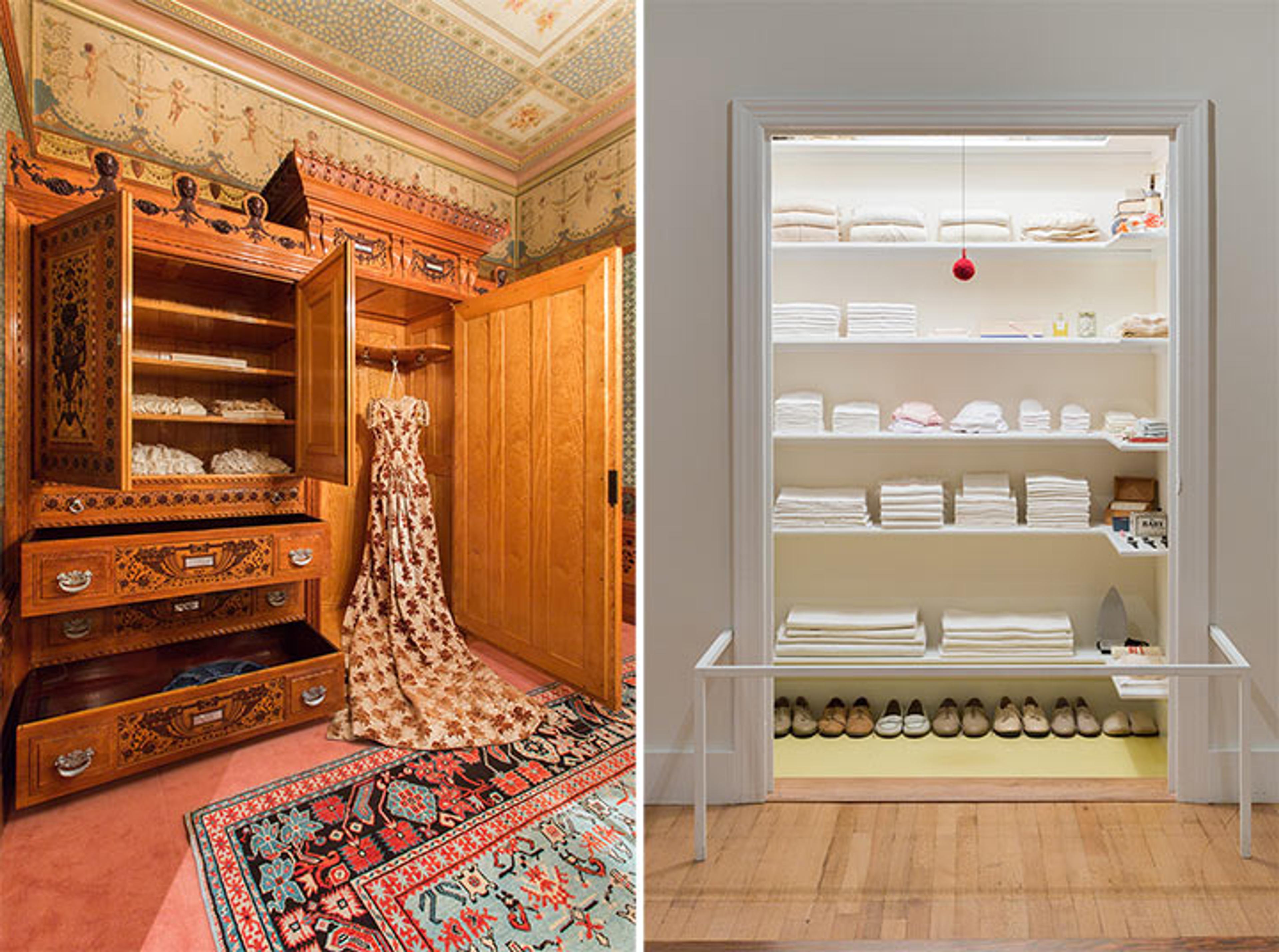
Left: George A. Schastey & Co. (1873–97). Worsham-Rockefeller Dressing Room, 1881–82, New York. The Metropolitan Museum of Art, New York, Gift of the Museum of the City of New York, 2008 (2009.226.1–19a–f). On view in gallery 742. Right: Maira Kalman (American, b. 1949) and Alex Kalman (American, b. 1985). Installation view of Sara Berman's Closet, 2015. Collection of the artists. On view in the Deedee Wigmore Galleries, gallery 743, through September 6, 2017
«The Worsham-Rockefeller Dressing Room, the latest addition to The American Wing's suite of historic interiors, has received a refreshed installation in response to the exhibition Sara Berman's Closet, conceived by artists Maira and Alex Kalman. The dialogue between the two "closets" illuminates the similarities—and differences—between the lives of Arabella Worsham (ca. 1850–1924) and Sara Berman (1920–2004). Living 100 years apart, these two women both found a way to declare their personal independence in the new lives they built in New York City. For Worsham, the decoration of her dressing room and the contents of her wardrobe—as suggested for Museum visitors by a selection of items from The Costume Institute's collection—represented a personal quest for identity amidst the social complexities of New York in the Gilded Age.»
Arabella Worsham
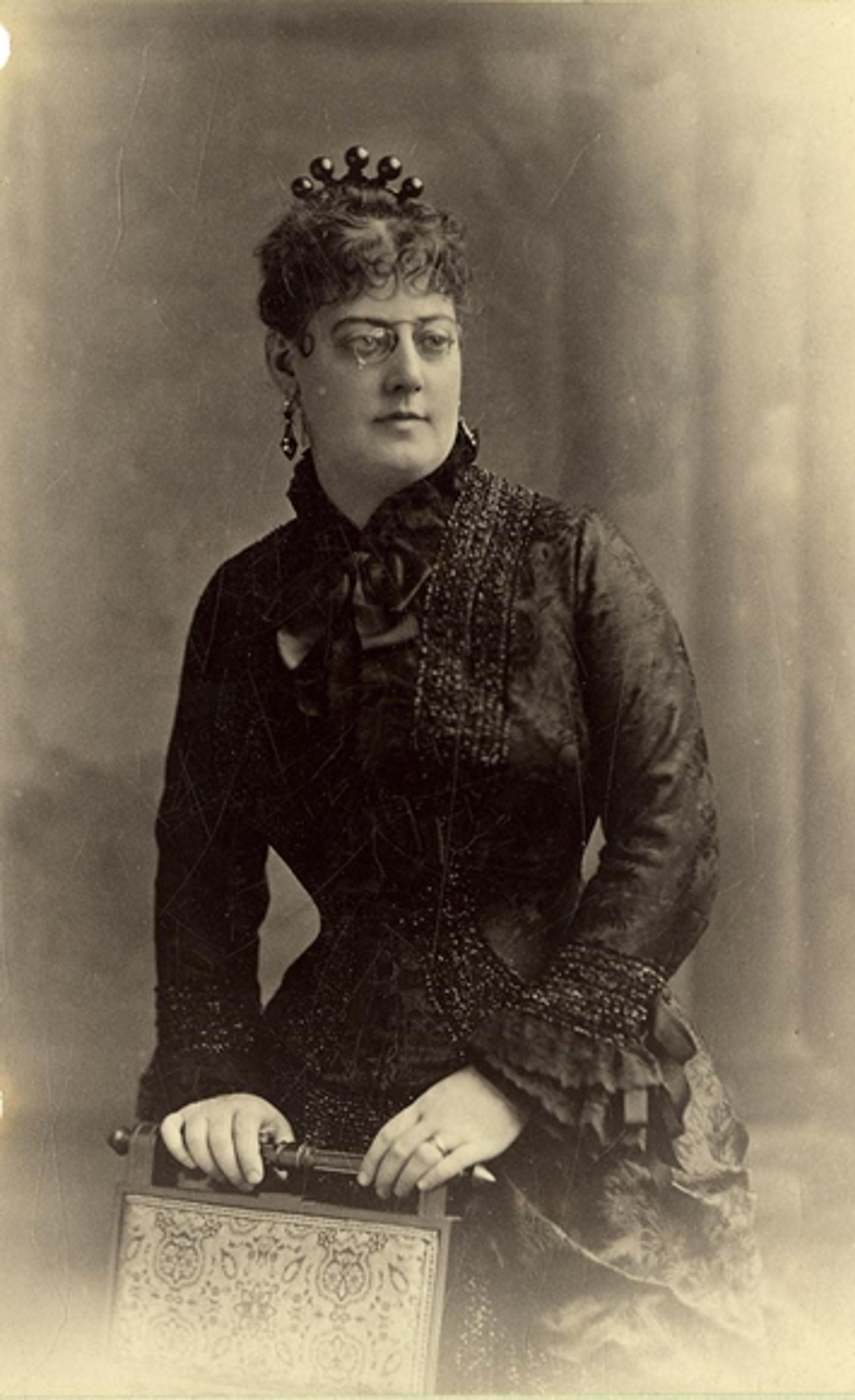
With the financial support of her paramour and future husband, railroad tycoon Collis P. Huntington, Arabella Worsham left behind the hardships of life in post–Civil War Richmond, Virginia, and fashioned a highly cultured and sophisticated new life for herself in New York. In 1881, Worsham commissioned George A. Schastey & Company, one of New York's leading cabinetmaking and decorating houses, to completely renovate her townhouse at 4 West 54th Street (which was demolished in 1938). The lavish interiors that Schastey created, captured in the dressing room's opulent decorative scheme, signaled Worsham's arrival into financial security; however, her questionable status as a mistress often excluded her from elite circles. Nevertheless, she embarked on a self-education that refined her artistic sensibilities and taste while developing her deep passion for art, education, and travel.
Arabella D. Huntington, ca. 1884. Hispanic Society of America, New York
Worsham and Gilded Age Fashion
Throughout these years of personal evolution, fashion and jewelry were among Worsham's greatest indulgences. During the 1881–82 renovations of her townhouse, Worsham made her first trip abroad and, while in Paris, had her portrait painted by Alexandre Cabanel (1823–1889), one of the leading society artists of the day.
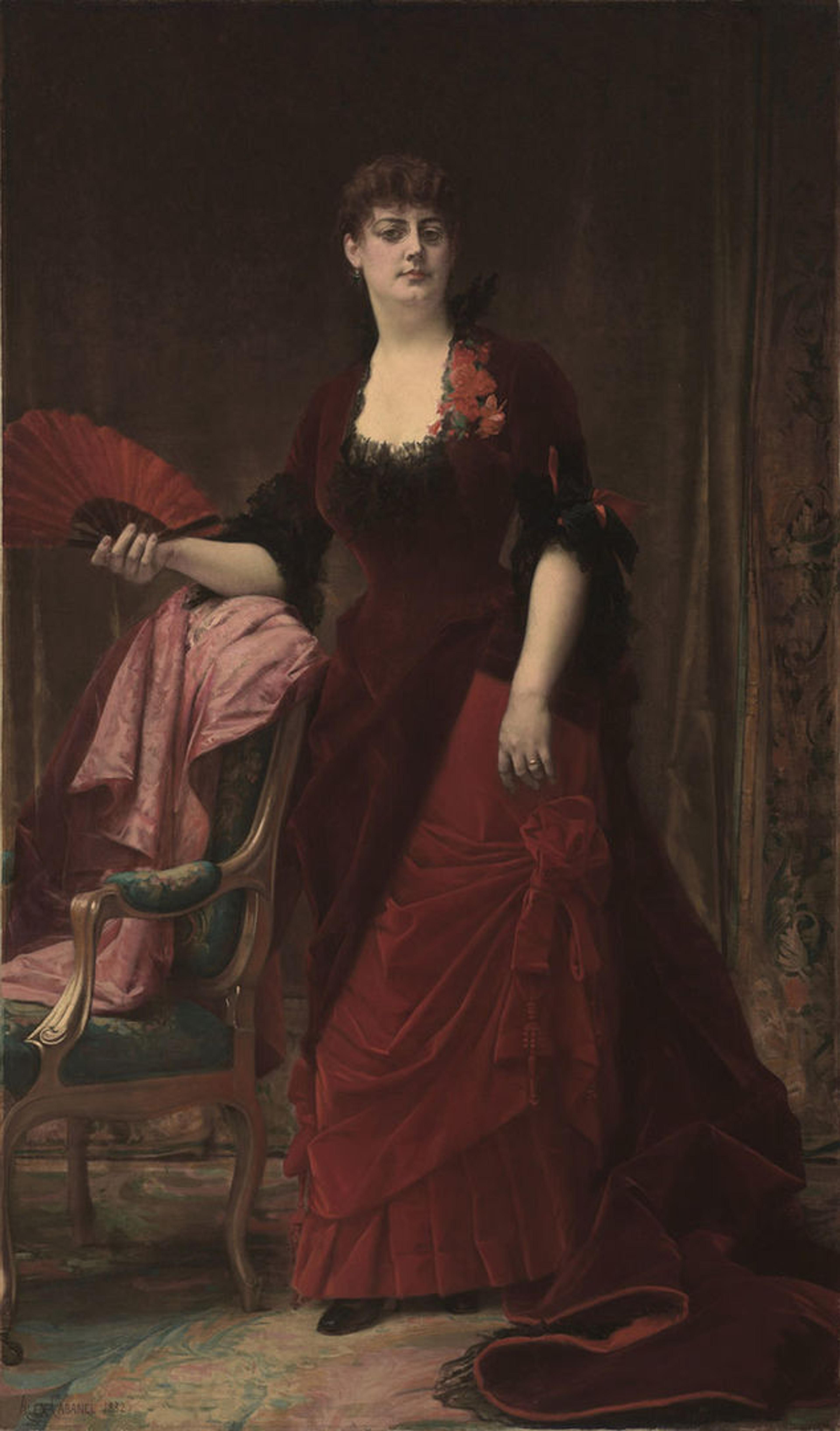
Alexandre Cabanel (French, 1823–1889). Arabella D. Worsham, 1882. Oil on canvas, 85 1/4 x 50 1/2 in. (216.5 x 128.3 cm). Fine Arts Museum of San Francisco, www.famsf.org.
Cabanel depicted Worsham in a sumptuous claret velvet gown structured in the latest fashionable silhouette. Likely purchased in Paris, the gown is composed of a gathered skirt paired with a deeply hued bodice that emphasizes the dramatic cinching of the corseted waist. A long train extends from the skirt, and trimmings of black lace complete the ensemble.
Although the garment appears as a complete whole in the portrait, it is an assemblage of multiple layers of separates, including undergarments; a corset; a protruding bustle; skirts and bodices of fine materials; and fashionable accessories.
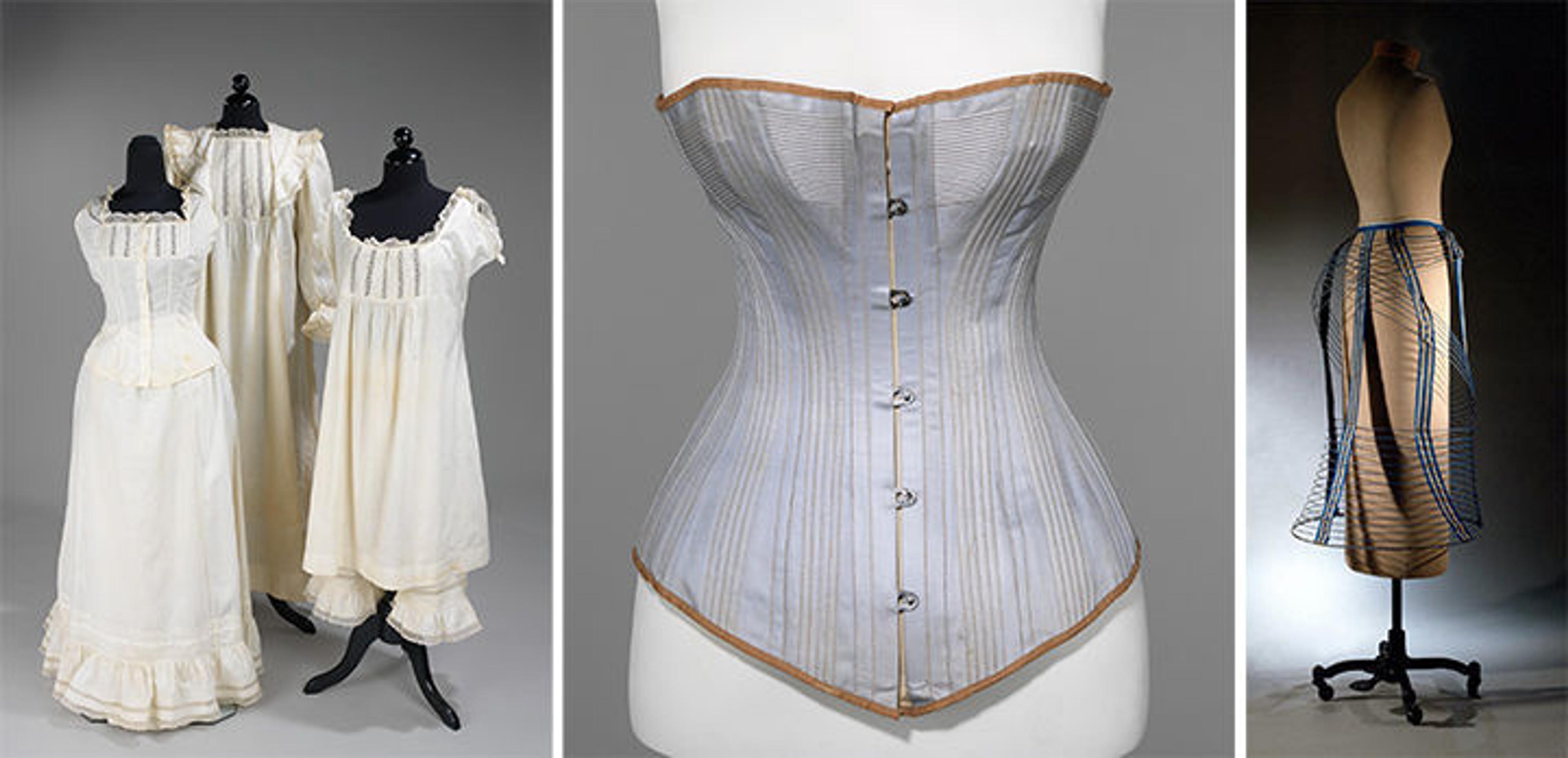
Left: Lingerie set, 1898. American. Linen. The Metropolitan Museum of Art, New York, Brooklyn Museum Costume Collection at The Metropolitan Museum of Art, New York, Gift of the Brooklyn Museum, 2009, Gift of Mrs. W. Paul Ferguson, 1956 (2009.300.221a–e). Center: Worcester Corset Company (American, 1864–1950). Corset, ca. 1880. Cotton, metal, and bone. The Metropolitan Museum of Art, New York, Brooklyn Museum Costume Collection at The Metropolitan Museum of Art, New York, Gift of the Brooklyn Museum, 2009, Gift of E. A. Meister, 1950 (2009.300.3110a, b). Right: Bustle, 1885. American. Cotton, steel. The Metropolitan Museum of Art, New York, Gift of Mrs. Robert K. Baker, 1963 (C.I.63.12.1)
In keeping with the structured social etiquette of late 19th-century upper-class culture, each activity required a prescribed costume, resulting in the need to change one's attire multiple times in a day. For a lady of means like Arabella Worsham, dressing required the assistance of at least one lady's maid, who would have brought the day's selection of clothes to the dressing room and assisted her mistress with putting on each garment, pinning up her hair, and applying make-up and perfumes.
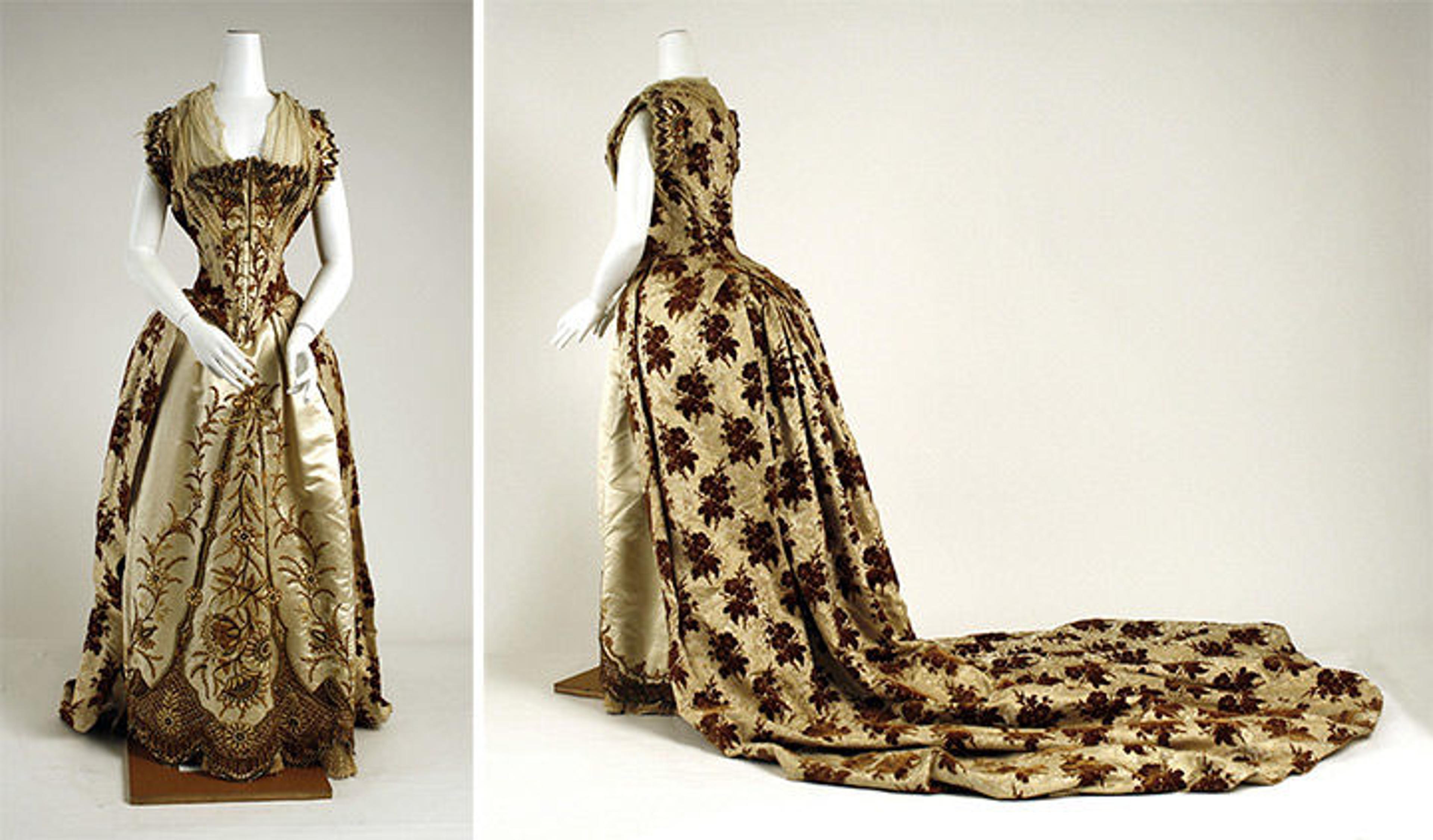
Ball gown, 1887–89. French. Silk. The Metropolitan Museum of Art, New York, Gift of The New York Historical Society, 1979 (1979.346.78a, b)
The items now on view in the cabinets, drawers, and wardrobe of the Worsham-Rockefeller Dressing Room represent the type of gown and accompanying accessories that Worsham housed in this elaborate interior. During her many travels abroad, Worsham shopped at Europe's most elite emporiums, frequenting the Parisian department store Bon Marché and the smart shops that lined the Burlington Arcade in London. Some of her most substantial expenditures were for large quantities of jewels and pearls from Tiffany and Company and Cartier. After one particular trip abroad in 1902, Arabella returned to New York with a new cache of gowns, jewelry, perfumes, and rugs valued at over two million dollars in today's currency.[1]
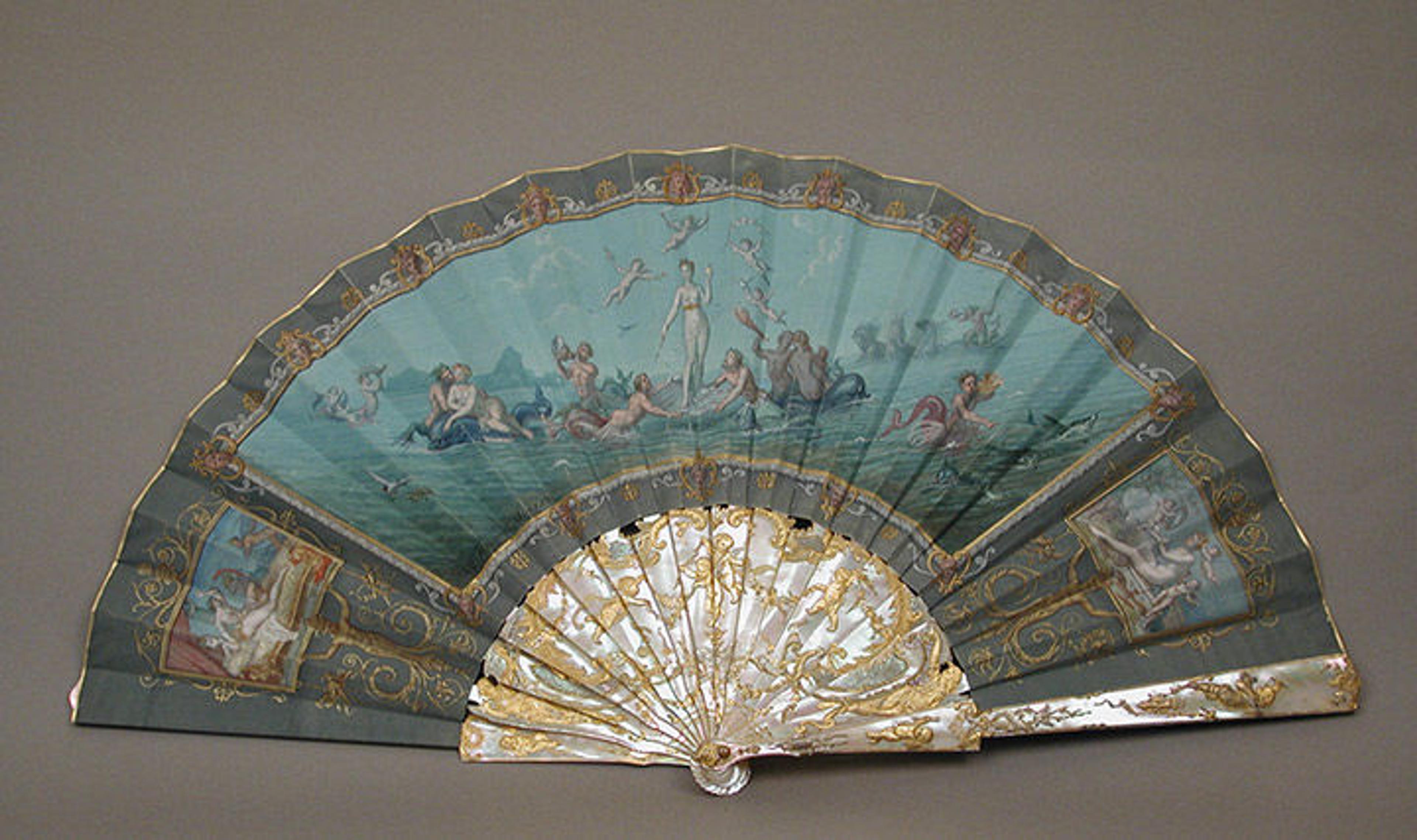
Fan leaf designed and painted by Edouard Moreau (1825–1878). Fan, ca. 1860–75. French. Paper, parchment, paint, mother-of-pearl, and metal, 11 1/8 x 21 1/2 in. (28.3 x 54.6 cm). The Metropolitan Museum of Art, New York, Gift of Mrs. William Randolph Hearst, 1965 (65.80.7)

When Worsham occupied this dressing room, she set out to shed her past and become a woman of refinement—a goal she ultimately achieved. At the time of her death, Worsham was recognized as one of the wealthiest women in America, well-known as a collector, patron of the arts, and philanthropist.
Left: Arabella D. Huntington, 1910–15. Hispanic Society of America
Notes
[1] The American Wing is greatly indebted to Shelley M. Bennett for generously sharing her research on Arabella Worsham and the Huntington family. For more information on the Huntington family, see Shelley M. Bennett, The Art of Wealth: The Huntingtons and the Gilded Age (San Marino, CA: The Huntington Library, Art Collections, and Botanical Gardens, 2013); notes, transcribed by Shelley Bennett, from the journal of Caroline Densmoor Huntington Holladay in the Henry E. Huntington Collection at the Huntington Library; and "Fortune in Clothes," Los Angeles Times, February 28, 1902, from the Shelley M. Bennett research files in the departmental files of The American Wing, The Metropolitan Museum of Art.
Related Links
Sara Berman's Closet, on view at The Met Fifth Avenue through September 5, 2017
Metropolitan Museum of Art Bulletin: "Artistic Furniture of the Gilded Age"
Read a MetLiveArts Blog post and listen to a Memory Palace podcast related to this exhibition: "Inspired by the Worsham-Rockefeller Dressing Room: 'Gallery 742'"
Watch "Inside Sara Berman's Closet," a conversation with curator Amelia Peck and artists Alex and Maira Kalman, on MetMedia.
